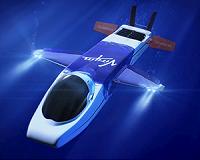 |
Paris (AFP) April 10, 2011 What do ceramic teeth braces, artificial hearts, airbags, insulin pumps and Olympics-calibre swimsuits have in common? Answer: they originated in space. All these gadgets and hundreds more are spinoffs from technologies developed for the multi-billion-dollar space programmes that kicked into high gear 50 years ago when Yuri Gagarin became the first human catapulted into orbit. Many of these offshoots began with a quest by American, Soviet and European engineers for materials that could perform new tasks or withstand extreme temperatures, cosmic rays and the stresses of high or zero gravity. So-called memory metals, for example, that flex and recover their shape in response to heat are used for shower valves to prevent scalding, surgical staples and tubing for reinforcing arteries called stents. Sharper-than-steel scalpels, medical implants and even performance-enhancing golf clubs -- stronger than titanium as elastic as plastic -- are today derived from a related class of space-age alloys called liquid metals. Likewise the flexible wire rims of your sunglasses... which may also feature a glass coating, developed to protect astronauts' eyes from glint and glare. Often the product seems quite remote from the technology that spawned it. When swimwear maker Speedo set about making a faster suit, it turned to experts at NASA Langley Research Institute, who had specialised in studying friction and drag. The resulting LZR line, launched in February 2008, quickly became de rigueur for competitive swimmers: more than nine out of 10 gold-medal winners at the Beijing Olympics six months later wore them. Other space-boosted sportsgear includes athletic shoes with a cushioning material designed by NASA for its spacesuits. Healthcare monitoring devices have also been derived from space-related inventions. Technology once used to gauge the temperature of distant stars and planets now monitors the body heat of humans by measuring, in less than two seconds, energy emitted by the eardrum. Automatic pumps that continuously deliver micro-doses of insulin -- eliminating the need for painful daily shots -- are based on NASA satellite components developed for the Viking Mars mission. Technology created to track the health of astronauts in deep space has now been integrated into fitness machines: an infrared heartbeat transmitter strapped against the chest uses the heart rate to directly modulate exercise intensity. And an artificial heart-pump, ten times smaller than earlier models, was inspired directly by systems that monitor fuel consumption on space shuttles. Some applications have gone from cosmic to cosmetic. Using material from missile-tracking devices, a company working with NASA invented translucent, shatter-resistant braces that have since been worn by hundreds of thousands of smiling adolescents. Shock-absorbent foams developed to protect astronauts from the brain-jarring effects of g-force are widely used in protective head gear, including for cyclists. A light-weight, fibrous material five times stronger than steel -- originally made for the Viking space vehicle parachute -- will soon be integrated in radial tires of your next car, according to NASA. Even gourmet food fans have reason to hail space-based science. Borrowing technology developed by ESA to study how fluids move in the bodies of weightless astronauts, Spanish producers can now measure with near-absolute precision the level of humidity in their high-priced hams.
Share This Article With Planet Earth
Related Links Space Tourism, Space Transport and Space Exploration News
 Branson unveils 'flying' sub to plumb ocean depths
Branson unveils 'flying' sub to plumb ocean depthsNewport Beach, California (AFP) April 5, 2011 British billionaire Richard Branson unveiled plans Tuesday to pilot a "flying" mini-submarine down to the furthest depths of the oceans, in his latest record-breaking adventure. The single-seater Virgin Oceanic craft will try to reach the deepest points in each of the world's five oceans - in what would be the first such feat - starting with the deepest of them all, in the western Pacific ... read more |
|
| The content herein, unless otherwise known to be public domain, are Copyright 1995-2010 - SpaceDaily. AFP and UPI Wire Stories are copyright Agence France-Presse and United Press International. ESA Portal Reports are copyright European Space Agency. All NASA sourced material is public domain. Additional copyrights may apply in whole or part to other bona fide parties. Advertising does not imply endorsement,agreement or approval of any opinions, statements or information provided by SpaceDaily on any Web page published or hosted by SpaceDaily. Privacy Statement |